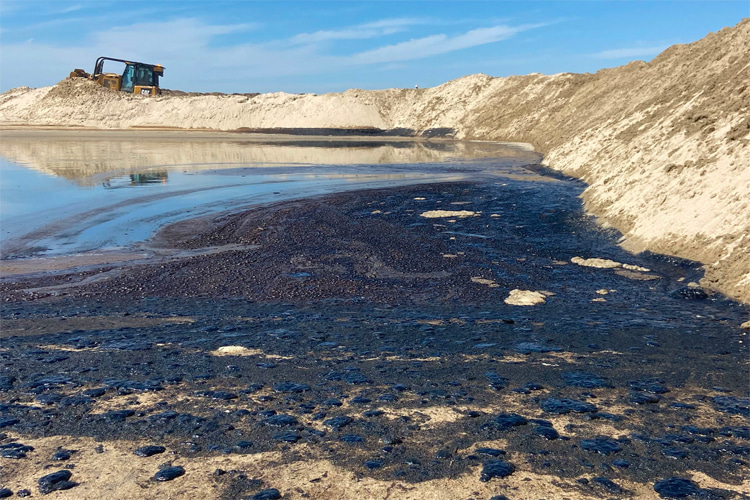It's already been considered one of the worst oil spills in the history of Southern California.
A breach in a pipeline off the coast of Southern California caused more than 125,000 gallons (568,800 liters) of post-production crude to spew into the Pacific Ocean.
The leak occurred on October 2, 2021, five miles off Huntington Beach, and it's the equivalent of 3,000 barrels.
The environmental disaster immediately affected marine life and local coastal wildlife, with thousands of animals covered with oil.
The most popular Southern California stretches of sand between Huntington Beach and Laguna Beach were closed to the general public.
The spill extended for about 13 square miles (33.6 square kilometers) and, depending on the ocean currents and winds, could move farther south and potentially affect San Clemente.
Amplify Energy Corp, a Houston-based company that operates the offshore pipeline, revealed that it might have identified and isolated the source of the leak.
The Elly platform that operates the damaged pipeline was built in the late 1970s and is inspected every two years.
According to several reports, the Coast Guard and Amplify Energy were slow to respond to the initial warnings.
The National Response Center received a call from an anchored ship communicating a sheen on the water and, six hours later, satellite imagery revealed a possible oil leak.
The response efforts were then activated, and only a small percentage of petroleum was isolated and removed from the Pacific Ocean.
The teams deployed floating barriers, and crews started working on the coastline to remove the oil footprint and clean up the beaches affected by the disaster.
The region is home to the Talbert Marsh and the Bolsa Chica Ecological Reserve, and the spill immediately impacted the sensitive local ecosystems.
The wetlands, protected by a coalition of multiple public and private partners and organizations for decades, were destroyed or severely damaged in one day.
Thousands of fish, sea turtles, ducks, seagulls, pelicans, blue herons, and other endangered species are at risk.
Offshore Drilling: Enough is Enough
Oil spills are not new in Southern California.
In 1969, 4.2 million gallons (19 million liters) of crude oil spilled near Santa Barbara; in 1990, Huntington Beach suffered the impact of 417,000 gallons (1.9 million liters) of oil leaked from a tanker.
Similar tragedies have continuously occurred in the Persian Gulf, Gulf of Mexico, Atlantic Ocean, and the Indian Ocean.
The economic, environmental, and social consequences of offshore drilling accidents always extend over a long period of time.
This time, and once again, all health and safety procedures were initiated.
The Orange County authorities advise residents to seek medical attention in case of eye or skin contact with oil or dispersants.
Health officials also ask people to avoid recreational activities such as surfing, running, or walking near the coastline.
Sea waters in the 20-mile stretch between Surf City USA and Laguna Beach are considered contaminated and unhealthy.
The smell of gas and oil filled the air near the shoreline, and waves of oil started breaking at Huntington Beach.
The iconic SoCal surf break could be closed to surfers and beachgoers for several months.
Regional and national non-governmental organizations have been asking the federal authorities to end offshore drilling for decades.
Gavin Newsom, the Governor of California, declared a state of emergency in Orange County.
Criminal and civil investigations are underway - a ship anchor could be the cause of the rupture on the underwater pipeline.
